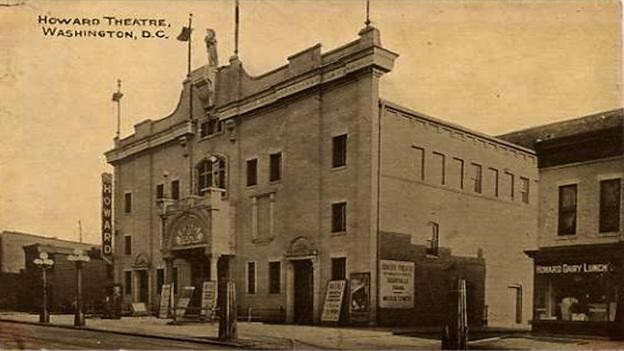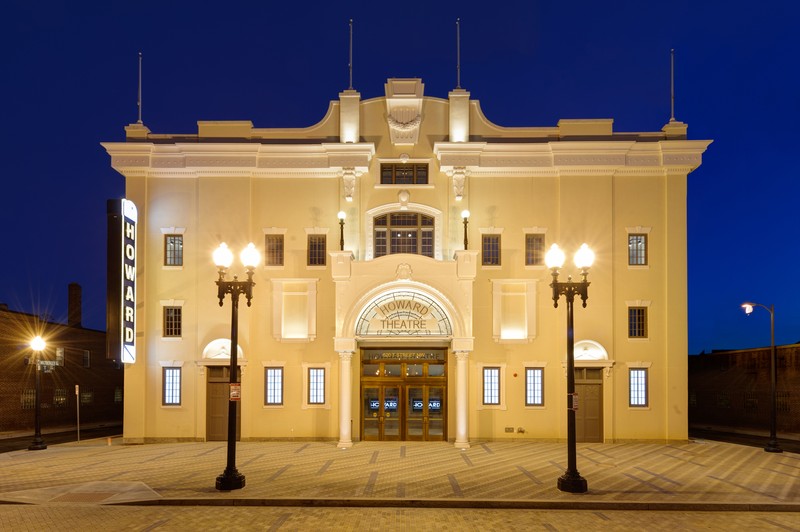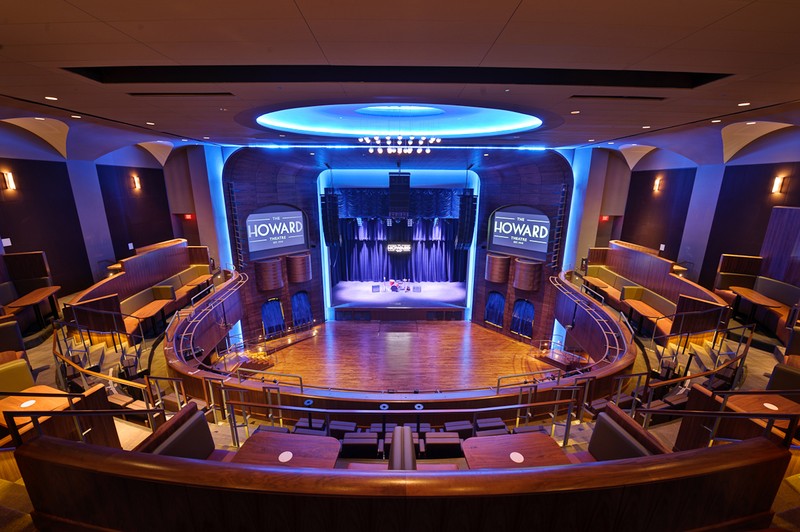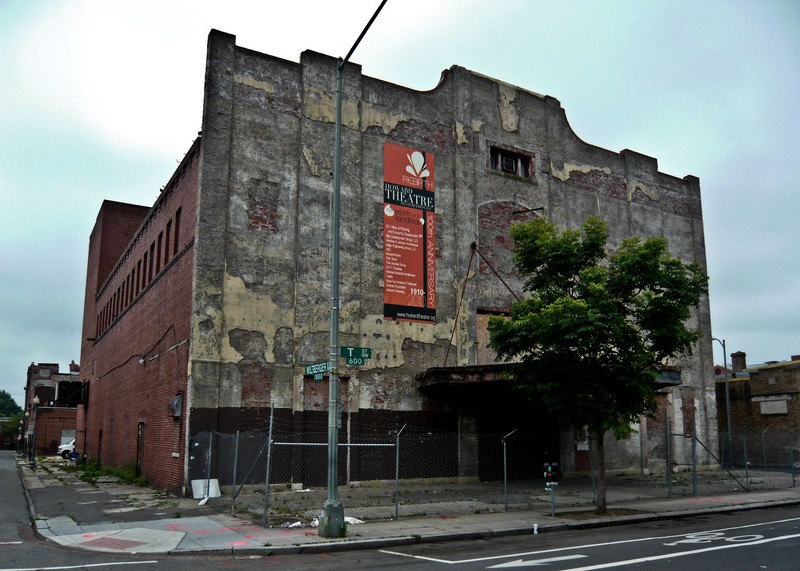The Howard Theatre
Introduction
Text-to-speech Audio
When Howard Theatre opened its doors in 1910, it was the first major Black-owned theater in the United States. Legendary performers such as Ella Fitzgerald, Duke Ellington, Smokey Robinson, Cab Calloway, and the Supremes all played to sell-out crowds at this venue. White and Black political leaders, including Franklin Deleano Roosevelt, also addressed crowds at this theater. In the era of segregation, this venue was more than simply a theater, it was a place where Black artists and musicians could perform with dignity and Black crowds could enjoy first-class accommodation. For the residents of Washington, the Howard Theatre was not simply a venue, it was an institution, a place where Black families could feel at home and Black performers could start their career.
The theater became a national landmark in 1974, but a decline of employment opportunity in the area, combined with public housing and urban renewal programs, changed the nature of the surrounding neighborhood. As crime gripped the area in the 1970s, the theater was forced to close. As the neighborhood experienced progress, local residents began a preservation effort. From 2006 to 2012, the building was restored and re-opened. Much of the interior is different from how the theater looked in the early 1900s, but thanks to a $29-million restoration effort, the facade of the theater matches its original appearance.
Images
Duke Ellington at The Howard Theatre. Photo credit to thehowardtheatre.com

The restoration effort included millions to restore the original neoclassical appearance.

The theater reopened in 2012-something unthinkable in the 1980s and 1990s when the neighborhood faced an urban crisis.

The interior matches the classic look of the early 1900s with modern comforts.

Many believed that the restoration of this historic theater was an impossible task, but with private investment and $20 million of public support, the theater was saved and re-opened.

Backstory and Context
Text-to-speech Audio
After its opening in 1910, The Howard Theatre shortly became the largest Black theatre in the world. It hosted acts and speakers of all kinds. In its earlier days, The Howard Theatre catered events from speakers like Booker T. Washington to road shows, vaudeville acts, and musicals. It was a place where dignified people such as President Franklin D. Roosevelt gathered with the common people to see performances. The Washington Bee declared it to be the "Theatre for The People."
The Howard Theatre was so popular among Black residents because segregation kept them rom attending the white-only theatres throughout the city. The theatre was created even before the Apollo Theatre in New York. It held amateur nights which introduced local talents such as Marvin Gaye to the public. Unfortunately, the D.C. riots of 1968 destroyed the theatre. However, the theatre was declared a National Landmark in 1974, and later became in possession of the D.C. government after not being sustainable.
In 2006 Ellis Development Group was awarded the contract to redevelop the building. A non-profit organization called Howard Theatre Restoration was later formed and began the financing process which included seeking government grants and private donations. In 2010, a groundbreaking ceremony was held at the theatre site. Finally in 2012, The Howard Theatre reopened.
The Howard Theatre was so popular among Black residents because segregation kept them rom attending the white-only theatres throughout the city. The theatre was created even before the Apollo Theatre in New York. It held amateur nights which introduced local talents such as Marvin Gaye to the public. Unfortunately, the D.C. riots of 1968 destroyed the theatre. However, the theatre was declared a National Landmark in 1974, and later became in possession of the D.C. government after not being sustainable.
In 2006 Ellis Development Group was awarded the contract to redevelop the building. A non-profit organization called Howard Theatre Restoration was later formed and began the financing process which included seeking government grants and private donations. In 2010, a groundbreaking ceremony was held at the theatre site. Finally in 2012, The Howard Theatre reopened.
Sources
Bloom, Georgiana. "The Awesome History and Rebirth of D.C.'s Howard Theatre." The Huffington Post. TheHuffingtonPost.com, 12 Apr. 2012. Web. 1 Dec. 2014.
"The Howard Theatre | History." History: The Story of The Howard Theatre. The Howard Theatre. Web. 1 Dec. 2014.
